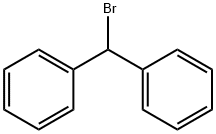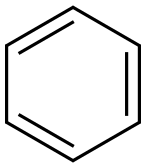1,2-Bis(bromomethyl)benzene
Synonym(s):o-Xylylene dibromide;1,2-Bis(bromomethyl)benzene
- CAS NO.:91-13-4
- Empirical Formula: C8H8Br2
- Molecular Weight: 263.96
- MDL number: MFCD00000175
- EINECS: 202-042-7
- SAFETY DATA SHEET (SDS)
- Update Date: 2024-12-18 14:08:57

What is 1,2-Bis(bromomethyl)benzene?
Chemical properties
white to light yellow crystal powde
The Uses of 1,2-Bis(bromomethyl)benzene
1,2-Bis(bromomethyl)benzene is used in the synthesis of isothioureas involved in the inhibition of human nitric oxide synthases. Also used in the synthesis of tridentate carbene ligands.
Purification Methods
Crystallise it from CHCl3 or pet ether, and/or distil it under vacuum. [Wenner Org Chem 17 527 1952, Beilstein 5 H 366, 5 I 180, 5 II 285, 5 III 819, 5 IV 929.]
Properties of 1,2-Bis(bromomethyl)benzene
| Melting point: | 91-94 °C(lit.) |
| Boiling point: | 140 °C / 20mmHg |
| Density | 1.96 g/mL at 25 °C(lit.) |
| refractive index | 1.6113 (estimate) |
| storage temp. | Keep in dark place,Sealed in dry,Room Temperature |
| form | Crystals or Crystalline Powder |
| color | White to light cream |
| Water Solubility | soluble, hydrolyses |
| BRN | 637159 |
| CAS DataBase Reference | 91-13-4(CAS DataBase Reference) |
| NIST Chemistry Reference | Benzene, 1,2-bis(bromomethyl)-(91-13-4) |
| EPA Substance Registry System | Benzene, 1,2-bis(bromomethyl)- (91-13-4) |
Safety information for 1,2-Bis(bromomethyl)benzene
| Signal word | Warning |
| Pictogram(s) |
 Exclamation Mark Irritant GHS07 |
| GHS Hazard Statements |
H315:Skin corrosion/irritation H319:Serious eye damage/eye irritation H335:Specific target organ toxicity, single exposure;Respiratory tract irritation |
| Precautionary Statement Codes |
P302+P352:IF ON SKIN: wash with plenty of soap and water. P305+P351+P338:IF IN EYES: Rinse cautiously with water for several minutes. Remove contact lenses, if present and easy to do. Continuerinsing. |
Computed Descriptors for 1,2-Bis(bromomethyl)benzene
| InChIKey | KGKAYWMGPDWLQZ-UHFFFAOYSA-N |
1,2-Bis(bromomethyl)benzene manufacturer
New Products
Tert-butyl bis(2-chloroethyl)carbamate (S)-3-Aminobutanenitrile hydrochloride N-Boc-D-alaninol N-BOC-D/L-ALANINOL N-octanoyl benzotriazole 3,4-Dibenzyloxybenzaldehyde 4-Hydrazinobenzoic acid 1,1’-CARBONYLDIIMIDAZOLE R-2-BENZYLOXY PROPIONIC ACID 3-NITRO-2-METHYL ANILINE 4-IODO BENZOIC ACID 4-HYDROXY BENZYL ALCOHOL 4-(3-chloropropyl)morpholine phenylhydrazine hydrochloride (2-Hydroxyphenyl)acetonitrile 4-Bromopyrazole 5-BROMO-2CYANO PYRIDINE 5,6-Dimethoxyindanone 5-broMo-2-chloro-N-cyclopentylpyriMidin-4-aMine 4-methoxy-3,5-dinitropyridine 2-(Cyanocyclohexyl)acetic acid 2-aminopropyl benzoate hydrochloride 1-(4-(aminomethyl)benzyl)urea hydrochloride tert-butyl 4- (ureidomethyl)benzylcarbamateRelated products of tetrahydrofuran








You may like
-
 α,α'-Dibromo-o-xylene CAS 91-13-4View Details
α,α'-Dibromo-o-xylene CAS 91-13-4View Details
91-13-4 -
 alpha,alpha'-Dibromo-o-xylene 95% CAS 91-13-4View Details
alpha,alpha'-Dibromo-o-xylene 95% CAS 91-13-4View Details
91-13-4 -
 O-Xylenedibromide CASView Details
O-Xylenedibromide CASView Details -
 O-Xylylene dibromide 98% CAS 91-13-4View Details
O-Xylylene dibromide 98% CAS 91-13-4View Details
91-13-4 -
 α,α′-Dibromo-o-xylene CAS 91-13-4View Details
α,α′-Dibromo-o-xylene CAS 91-13-4View Details
91-13-4 -
 91-13-4 98%View Details
91-13-4 98%View Details
91-13-4 -
 13057-17-5 95.0%View Details
13057-17-5 95.0%View Details
13057-17-5 -
 4-bromoaniline 106-40-1 99.0%View Details
4-bromoaniline 106-40-1 99.0%View Details
106-40-1
Statement: All products displayed on this website are only used for non medical purposes such as industrial applications or scientific research, and cannot be used for clinical diagnosis or treatment of humans or animals. They are not medicinal or edible.